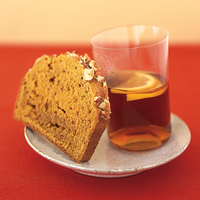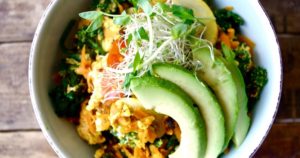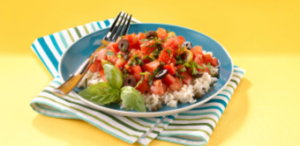
You know that the oversized portions, endless bread baskets and heavy sauces at restaurants can thwart your efforts to lose weight. But do you know how many calories you’re eating at your own kitchen table or office desk from foods that were prepared outside your home? This includes takeout foods, ready-to-eat entrees, to-go pizzas and paninis, deli salads, and all the prepared foods made in your local grocery store.
If you’re eating a lot of meals that you didn’t make with your own two hands, you’re in good company. Research shows that spending on takeout and prepared foods has been on the rise in the United States for the past four decades. This trend is a serious contributor to weight gain and other health problems in adults and children.
What’s the connection? When you buy takeout or prepared foods, you’re often trading convenience for calories. Foods prepared outside your home are a timesaver, but they often contain more fatty and sugary ingredients than you would typically use at home. Plus, portions can be big. As a result, grabbing foods on the go can add a lot of calories to your day. In addition, prepared foods tend to be high in salt and low in fiber and other nutrients that help promote overall health.
A deliberate effort to curb your convenience foods or choose healthier options can make a huge difference in your weight-loss efforts. Follow these tips:
- Eat breakfast at home, or pack it up. It’s ideal to avoid less-healthy takeout and prepared foods as much as possible. But that may seem difficult if you regularly eat on the run. Start one meal at a time. Eat a quick and healthy breakfast — such as whole-grain cereal or whole-grain toast with peanut butter and a piece of fruit — before you leave the house. Or take a healthy option — such as a banana and yogurt — with you rather than picking up a bagel or muffin at your local coffee shop.
If your mornings are frantic, figure out what you’re going to eat the night before and set out dry ingredients and bowls to save time. Or make a t-go breakfast the night before that you can grab in the morning. - Pack a flavorful, healthy lunch that you look forward to eating. It doesn’t matter how healthy your packed lunch is if you skip it and head to a cafe with co-workers — or it leaves you unsatisfied and reaching for a cookie. If you look forward to a turkey sandwich with lettuce and tomato on whole-wheat bread and a side of fruit every day, that’s great. If not, pack something you want to eat. Cook an extra chicken breast at dinner. Then slice it and toss it with strawberries, pecans and spinach for lunch. Or put together a whole-wheat wrap with black beans, salsa, lettuce, tomato and a few slices of avocado.
- Bring along healthy snacks. When you leave the house, take fresh fruits and vegetables with you. Or keep them at your office. Having healthy snacks at hand will reduce your reliance on convenience foods. To save time, cut up veggies or fruit when you return from the grocery store and put them in travel containers. Or pack a few pretzels and a small container of cottage cheese for dipping.
- Assemble simple dinners. You can assemble a quick dinner from fresh ingredients in the same amount of time it takes to wait in line at your local takeout joint. Rather than running for takeout, go to the grocery store and buy smoked salmon, a whole-wheat baguette and the fixings for a Greek salad — cherry tomatoes, cucumbers, green pepper, red onion, kalamata olives, a sprinkling of feta cheese, and red-wine vinegar and olive oil for vinaigrette. Toss together the salad ingredients and serve on a platter with the salmon and baguette.
Better yet, put these ingredients on your shopping list and meal plan. This Greek-inspired meal will come together even more swiftly if you don’t have to stop at the store. And like any dish, the more often you make it, the quicker it is to prepare. Don’t care for salmon? Substitute water-packed canned tuna or already-cooked chicken.
Choose wisely when you buy prepared foods. Despite your best efforts to cut back on convenience foods, they may still be part of your diet occasionally. When you do purchase ready-to-eat entrees or takeout meals, avoid fried items and cheesy options. Steamed, broiled, baked or poached entrees tend to be healthier choices. Choose lower-calorie sauces and condiments. Substitute brown rice, whole-wheat bread and other whole grains as much as possible, and load up on fresh vegetables.






 When ordering food at a restaurant, do you know which items may be loaded with fat and calories? Unlike when you’re grocery shopping, the foods in a restaurant may not have nutrition labels listing their fat grams and calorie content.
When ordering food at a restaurant, do you know which items may be loaded with fat and calories? Unlike when you’re grocery shopping, the foods in a restaurant may not have nutrition labels listing their fat grams and calorie content.



